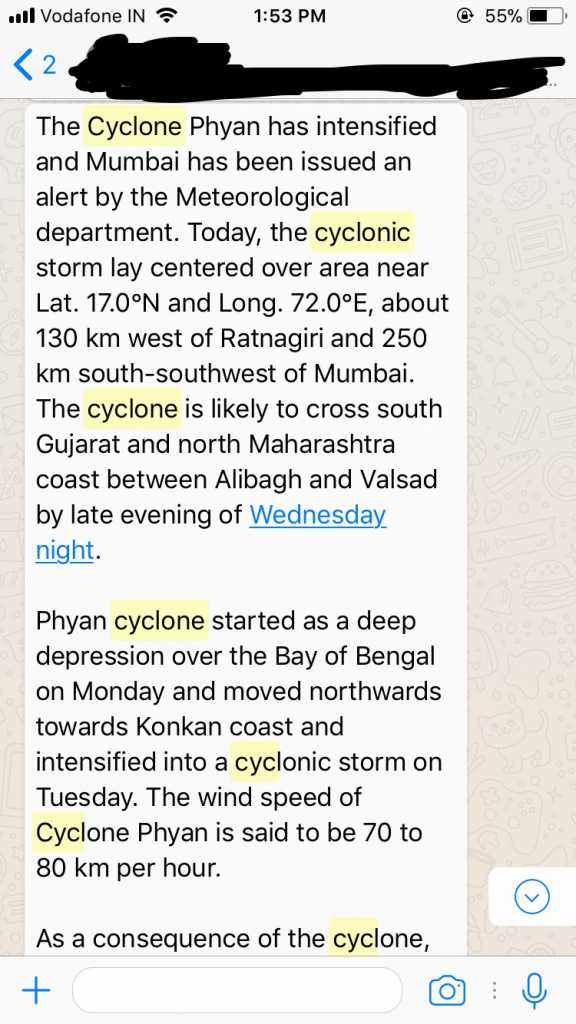When heavy rains lashed the city of Mumbai on August 29th, people were thronged with Whatsapp forwards and other social media posts about how the happenings are an outcome of ‘Cyclone Phyan’. What they didn’t know was that Cyclone Phyan took place in 2009, cossing coast of Maharashtra between Alibagh and Valsad , and the city of Mumbai was issued a warning. When the forward was circulated, alert citizens did the necessary fact checking and knew better than to blindly believe it. As for those who went by what the forward said, panic definitely ensued, especially considering more than half of the city struggled to get home, and camped out at office, or a nearby shelter for the night.

As life-changing as the internet has been for us, it unfortunately gives people the freedom to put out false or misleading information, that may or may not spark a frenzy – as is evident from the number of actors involved in a death hoax! So how do you keep such ‘fake news’ at bay?

- Never trust mass forwards without verifying them
If you receive a forward on your family or friends’ group that probably seems a little fishy, you can (and must) always do a quick Google search to check if there’s anything being said about the contents of the forward. If you find contrasting information, alert your friends or family on the group to prevent them from circulating the forward further. And if you yourself are sending one, always double check so that you aren’t a victim of a fake forward cycle.
- Check the page source and URL
Reputed agencies that have been around for years are known to be more trustworthy than the newer ones. At the same time, watch out for these websites’ URL. For example, ABC news’ original website is www.abcnews.go.com but a website called www.abcnews.com.co had been circulating around with a similar logo to that of ABC News, leaving netizens confused. Minor differences as such can go a long way. Also verify the article itself – check the sources mentioned in the article, and how credible they are, and if the facts mentioned in the article run parallel with that if the sources.
- Check the date
They beauty of the internet is that once you put something out there, it lives forever. The date of the article is one of the best bets there is to checking whether the news you’ve received is true, and of relevance.
- Check the ‘about’ page
Credible news agencies will have an about page telling you what the agency does, the team associated with it, the contact number and office address. Besides this, you can also type the article’s author’s name into the search engine and read a couple of articles they’ve previously written, which will give you an idea of their credibility.
- Read beyond the headline
Always cross check the headline with the contents of the article. Check for any contradictory statements, below average picture quality, and grammatical errors, as these may be your first clues to identifying fake news. Also check if the website has previously come under fire for peddling fake news.
























